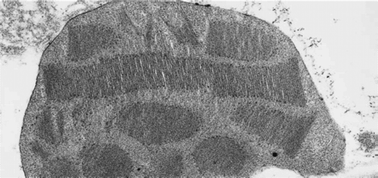The formation of grana in chloroplasts of higher plants is examined in terms of the subtle interplay of physicochemical forces of attraction and repulsion. The attractive forces between two adjacent membranes comprise (1) van der Waals attraction that depends on the abundance and type of atoms in each membrane, on the distance between the membranes and on the dielectric constant, (2) depletion attraction that generates local order by granal stacking at the expense of greater disorder (i.e. entropy) in the stroma, and (3) an electrostatic attraction of opposite charges located on adjacent membranes. The repulsive forces comprise (1) electrostatic repulsion due to the net negative charge on the outer surface of thylakoid membranes, (2) hydration repulsion that operates at small separations between thylakoid membranes due to layers of bound water molecules, and (3) steric hindrance due to bulky protrusions of Photosystem I (PSI) and ATP synthase into the stroma. In addition, specific interactions may occur, but they await experimental demonstration. Although grana are not essential for photosynthesis, they are ubiquitous in higher plants. Grana may have been selected during evolution for the functional advantages that they confer on higher plants. The functional consequences of grana stacking include (1) enhancement of light capture through a vastly increased area-to-volume ratio and connectivity of several PSIIs with large functional antenna size, (2) the ability to control the lateral separation of PSI from PSII and, therefore, the balanced distribution of excitation energy between two photosystems working in series, (3) the reversible fine-tuning of energy distribution between the photosystems by State 1–State 2 transitions, (4) the ability to regulate light-harvesting via controlled thermal dissipation of excess excitation energy, detected as non-photochemical quenching, (5) dynamic flexibility in the light reactions mediated by a granal structure in response to regulation by a trans-thylakoid pH gradient, (6) delaying the premature degradation of D1 and D2 reaction-centre protein(s) in PSII by harbouring photoinactived PSIIs in appressed granal domains, (7) enhancement of the rate of non-cyclic synthesis of adenosine triphosphate (ATP) as well as the regulation of non-cyclic vs. cyclic ATP synthesis, and (8) the potential increase of photosynthetic capacity for a given composition of chloroplast constituents in full sunlight, concomitantly with enhancement of photochemical efficiency in canopy shade. Hence chloroplast ultrastructure and function are intimately intertwined.


 Please wait while we load your content...
Please wait while we load your content...